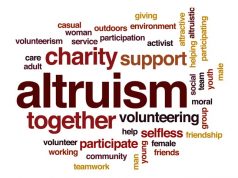Pahela Baishakh, the first day of Baishakh month, the first calendar date for the year. In Bangladesh it’s celebrated at 14thApril, in Nepal it’s on the 13th and in the rest of the world like in Punjab, it’s on the 15th of April of the Gregorian calendar. The days might be different but it’s new year nonetheless. How do the people celebrate this day across the world?
In Nepal the ritual is to have a Puja in temple and having Tika or Tilak on the forehead, but the most important, as Ranju puts it, is; sitting down with your family and eating and celebrating together.
It is the spirit of togetherness with the family that makes the New Year in Nepal so special. This year the Bikramshamvat calendar is on its 2073 year. In Thamel however the party starts in the New Year’s Eve, and goes on all night.
In Bangladesh celebrating the start of the new Bengali calendar (1423) is more of a crowd thing, its festivity and colors and all around the universities bring out pageants and floats on a rally that is called the Mongol Shovajatra. The floats and festoons represent Baisakhi art style portraying owls, horses, tigers and other animals. And dresses that are considered traditional Bengali (share, Panjabi, dhoti) are worn during the parade.
It’s not only the universities in the villages and cities and towns across Bangladesh the festivities are in any way no less, in some places there is a Baisakhi mela, where hundreds of people go to enjoy this very special day. Some folks bring trained monkeys to show special tricks and the snake charmers also join in the party, there is also the Nagordola, where children and people of all ages can grab a ride to celebrate this auspicious event.
Marzia Kheya, one student from Dhaka who is not celebrating Baishakh in its usual grandeur this year because she is in USA tells this reporter while giggling, “sometimes I guess it’s important to stay away from such festivity, so you get an idea of how important they are in your life.†She is still celebrating with the Bangladeshi students unit in her university in Minnesota but she says it will not be the same. She says every year she would wear sharee and put flowers in her hair and go early to Romna Botomul where the day will begin with Rabindra Shangeet, she sang two lines of one such song reminiscing the event “esho he boishakh esho esho†which roughly translates into come o boishakh come to our lives. There is also the traditional food, panta-elish, which came into fire because “elish†or “hilsha†fish being a main course of the meal has now being fished to extinction, so the government has put a ban on it this year.
One would think the celebrations are so different from each other in the sense how the celebrations are carried. But historically, the dates that represent the New Year has been chosen more or less to mark the reaping of the new harvest from which the date of the New Year starts.
This year Barack Obama also wished Shuvo Noboborsho (Happy New Year) to the millions celebrating festival in South Asia. Hearing this, Kheya said, “I hope this brings the festival into light across USA and the world, it’s very beautiful festival, and may this festivity contribute to strengthen the relationships between all nations.â€
No matter where you celebrate the event, at Thamel in Kathmandu or at Romna Botomul in Dhaka, Baisakh has a humble beginning. It celebrates the reaping of the new harvest of peasants across South Asia. In lieu of the billions of farmers across this subcontinent who represent the majority of people in these parts may this New Year bring prosperity into the lives of everyone.
Shubho Nababarsha!

By Sarker Shams Bin SharifÂ










